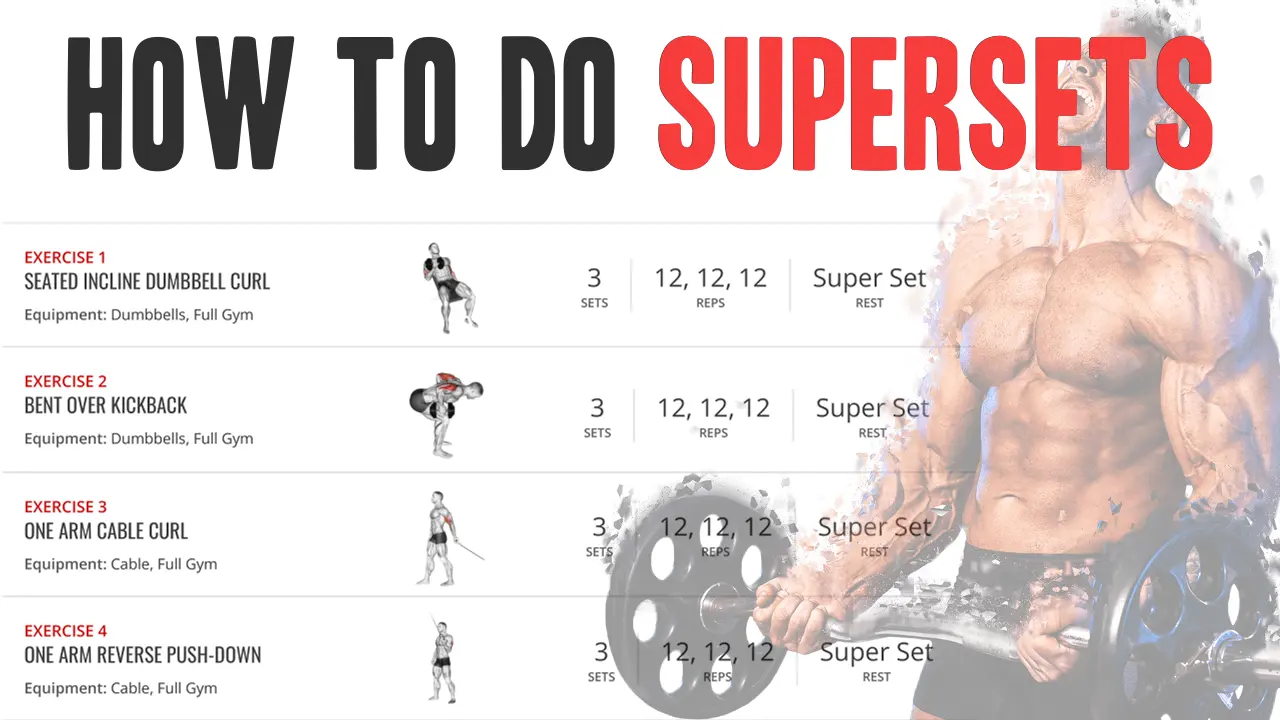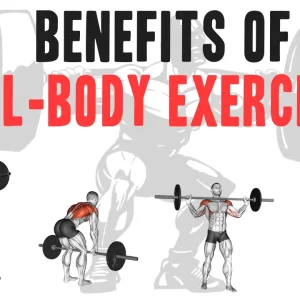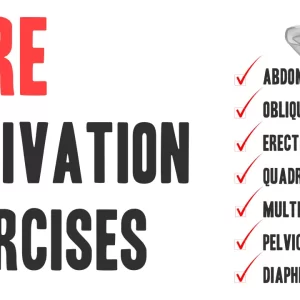Contents
Supersets are a very simple concept… Basically, you just do two exercises back to back and don’t rest in between! A quick example of this is doing a barbell curl and then moving directly into a dumbbell curl. This method is widely used in strength training and bodybuilding to enhance muscle growth, increase intensity, and improve overall fitness.
Sound simple? It definitely is. But there are many different combinations and ways to use Supersets to make it an incredibly powerful training technique.
Before I get into specific combinations, you need to know what, generally speaking, makes a Superset more effective than two regular sets done with rest inbetween. In this guide, we’ll explore the key steps to effectively integrate supersets into your workout routine for maximum benefits.
Why Supersets are so Effective
In essence, the metabolic demand created by supersets allows you to achieve a significant muscle pump and stimulate muscle growth in a shorter timeframe compared to traditional workouts.
Scientific studies indicate that incorporating supersets into your routine may lead to various physiological adaptations. This includes improvements in musculoskeletal, cardiorespiratory, and metabolic systems.
This time-efficient approach is particularly beneficial for individuals with busy schedules who seek effective workouts without spending extended periods in the gym.
Types of Supersets
There are basically two common types of supersets: supersets that work the same muscle group and supersets that work opposite muscle groups.
In addition to these, there are various superset options that can be incorporated into your workout routine, each offering unique benefits.
- Lower/Upper Body Supersets: This type of superset pairs an exercise for your lower body with an exercise for your upper body.
- Compound Supersets: This type of superset pairs two compound exercises that work different muscle groups.
- Isolation Supersets: Here, you pair two isolation exercises that target the same muscle group but focus on different aspects of its function.
- Pre-Exhaustion Supersets: This strategy involves performing an isolation exercise immediately before a compound exercise targeting the same muscle group.
- Post-Exhaustion Supersets: This superset begins with a compound exercise and then ends with an isolation exercise.
The underlying principle of supersets remains consistent across these variations – to challenge the muscles by minimizing rest periods and promoting greater muscle fatigue. Choosing the right superset for you will depend on your goals and experience level.
How to do Supersets:
Let’s delve into the two most common types of supersets: those that target the same muscle group and those focusing on opposite muscle groups.
1- Same Muscle Group Supersets (Agonist Supersets):
Focuses on two exercises that target the same muscle group, often from different angles or with variations in movement. The key characteristic of this superset is the emphasis on working the same muscle group in succession, providing a comprehensive stimulus for muscle development.
How to do:
Choose two exercises that effectively target the desired muscle group. These exercises can involve different angles, movement patterns, or variations to ensure a well-rounded workout for the specific muscles.
Chest Supersets:
Bench Press | 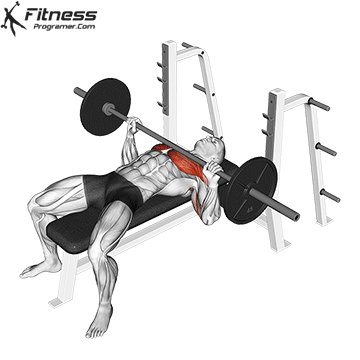 |
Dumbbell Fly | 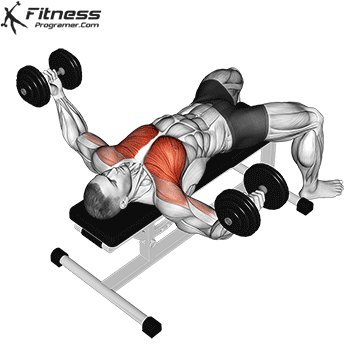 |
Shoulder Supersets:
Military Press | 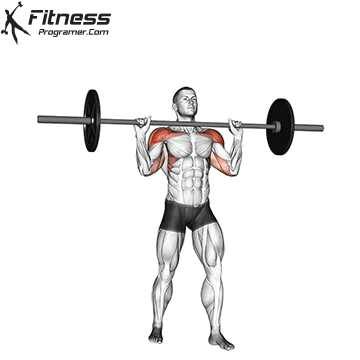 |
Lateral Raise |  |
Back Supersets:
Lat Pulldown |  |
Seated Cable Row | 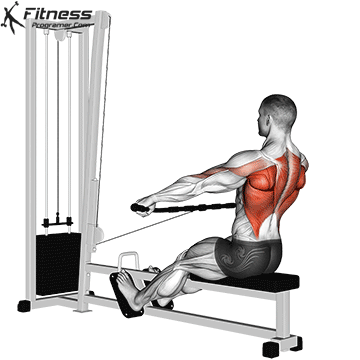 |
Biceps Supersets:
Barbell Curl | 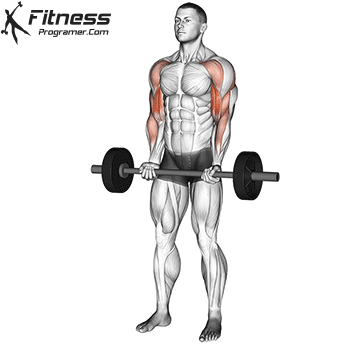 |
Dumbbell Curl | 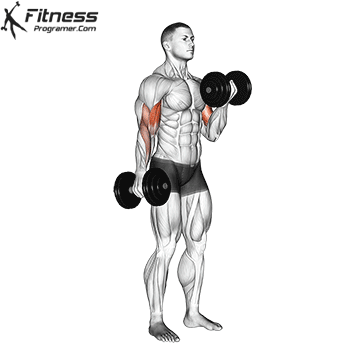 |
Leg Supersets:
Squat | 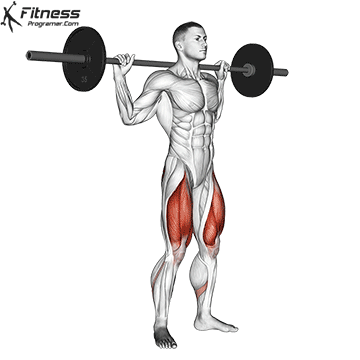 |
Leg Extension | 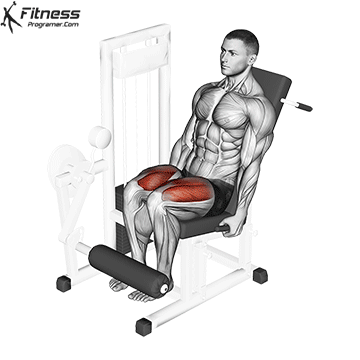 |
Same Muscle Group Supersets can be time-efficient, allowing you to target specific muscle groups without the need for extended workout sessions.
Incorporate Same Muscle Group Supersets into your workout routine 1-2 times per week for the targeted muscle group. This frequency helps prevent overtraining and allows for optimal recovery.
2- Agonist-Antagonist Supersets:
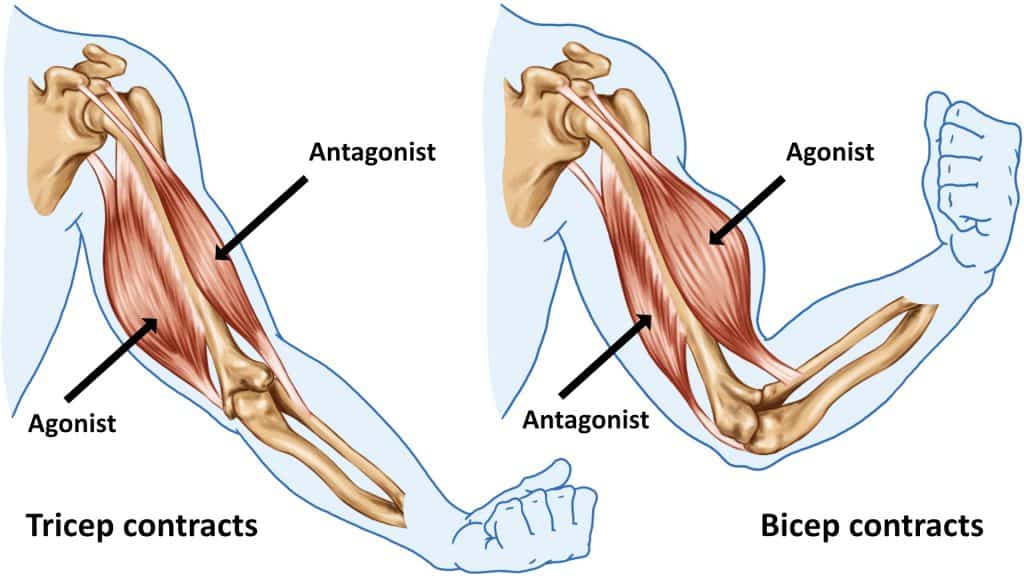
The Agonist-Antagonist Superset is a training technique that focuses on pairing exercises targeting opposing muscle groups. This approach allows you to work on muscles with contrasting functions, providing a well-rounded and efficient workout.
While one muscle group is actively engaged, the opposing muscle group is in a state of relative rest. This efficiency is beneficial for those with time constraints.
How to do:
Choose one exercise targeting the agonist muscle (the one actively contracting during movement) and pair it with an exercise targeting the antagonist muscle (the one relaxing during the movement).
Chest and Back Superset:
Bench Press |  |
Bent Over Row |  |
Cable Curl | 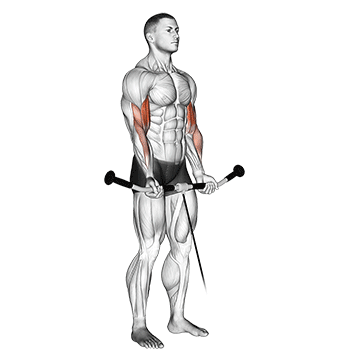 |
Pushdown | 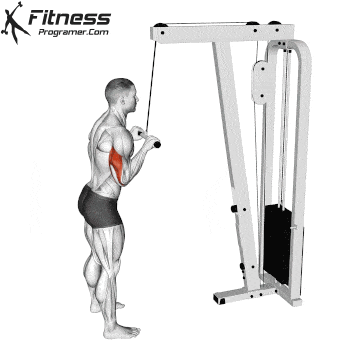 |
Leg Agonist-Antagonist Supersets:
Leg Extension |  |
Leg Curl |  |
The alternating nature of Agonist-Antagonist Supersets can lead to more efficient workouts, as you are constantly moving between opposing muscle groups.
Incorporate Agonist-Antagonist Supersets into your workout routine 1-2 times per week for a particular muscle group. Experiment with different pairings to target specific areas based on your fitness goals.
Example agonist-antagonist superset arm training
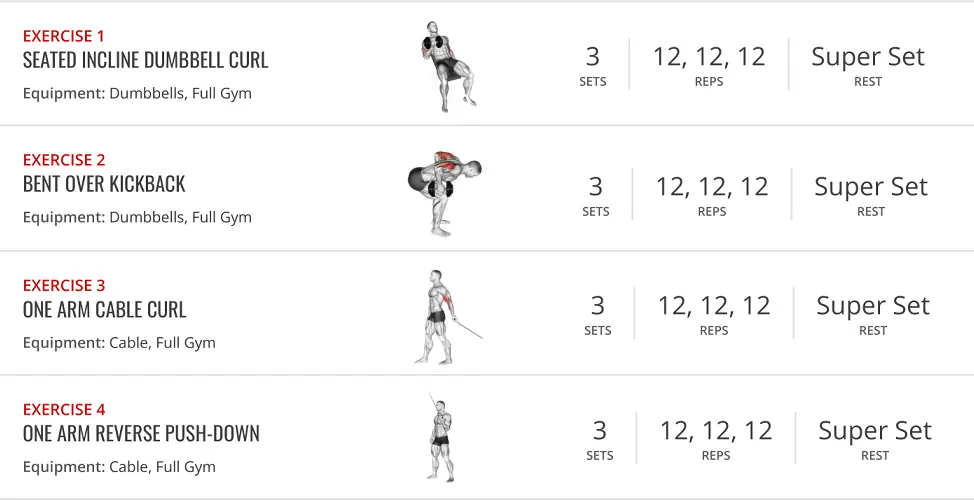
Frequently asked questions with supersets:
Should a beginner do supersets?
Beginners may find it challenging to maintain proper form and control during supersets. It’s often recommended for novices to establish a solid foundation with traditional strength training before incorporating advanced techniques like supersets.
What are the disadvantages of supersets?
Constantly performing high-intensity supersets without adequate rest can lead to overtraining and excessive fatigue. Performing exercises in rapid succession may compromise proper form and increase the risk of injury, especially when fatigue sets in. It’s crucial to prioritize correct technique to reduce the likelihood of strains, sprains, or other injuries.
When to supersets?
When time is limited: If you have limited time for your workout sessions, supersets can be a great solution. They allow you to target multiple muscle groups in a shorter period by reducing rest time between exercises.
Plateau Breaking: If you’ve reached a plateau in your training progress, incorporating supersets can provide a novel stimulus to challenge your muscles. Use supersets strategically to break through plateaus and stimulate new adaptations.
In summary
In conclusion, supersets are a valuable tool in any fitness enthusiast’s arsenal. They offer a practical way to maximize your workouts, increase muscle engagement, and elevate your fitness game. Whether you’re aiming for muscle growth, fat loss, or improved endurance, supersets can be tailored to suit your goals. Stay tuned for more in-depth guides on different types of supersets and how to incorporate them into your workouts effectively.
References:
- The effects of traditional, superset, and tri-set resistance training structures on perceived intensity and physiological responses: PMID: 28698987
- The metabolic costs of reciprocal supersets vs. traditional resistance exercise in young recreationally active adults PMID: 20300020
- Andrew R Kelleher 1, Kyle J Hackney, Timothy J Fairchild, Stefan Keslacy, Lori L Ploutz-Snyder. PMID: 20300020 – Metabolic Profile of Reciprocal Supersets in Young, Recreationally Active Women and Men

